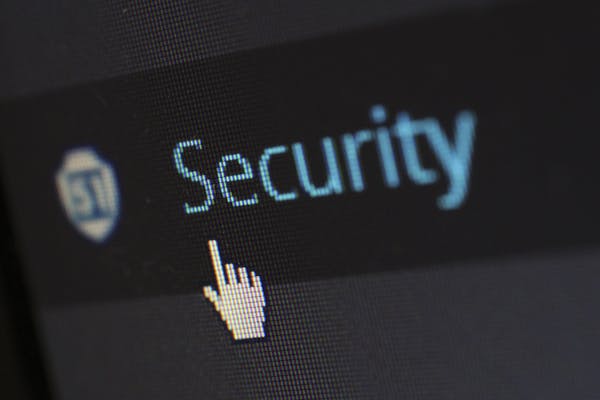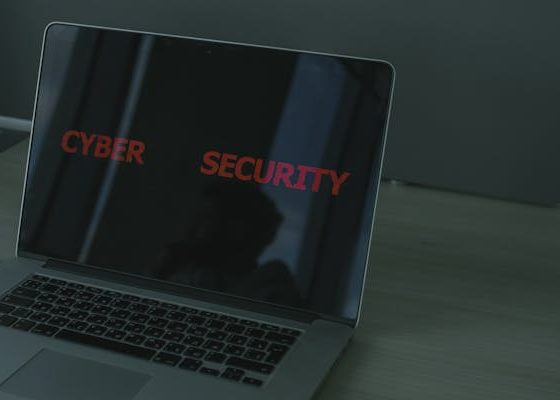
In the digital age, cybersecurity has become an essential aspect of our daily lives. As our reliance on technology grows, so does the threat posed by cybercriminals. The concept of cybersecurity involves protecting systems, networks, and data from digital attacks. These attacks are often aimed at accessing, changing, or destroying sensitive information; extorting money from users; or disrupting normal business operations. One of the critical aspects of cybersecurity is understanding how to avoid hacking—a pervasive threat that can compromise personal information, financial data, and corporate secrets. This article delves into the various facets of cybersecurity and provides practical tips on preventing hacking.
The Importance of Cybersecurity
The importance of cybersecurity cannot be overstated. In a world where personal and business data are increasingly stored online, the consequences of a data breach can be devastating. For individuals, a breach can lead to identity theft, financial loss, and a loss of privacy. For businesses, the implications can be even more severe, including significant financial losses, damage to reputation, and legal repercussions.
According to a report by Cybersecurity Ventures, cybercrime will cost the world $10.5 trillion annually by 2025. This staggering figure underscores the need for robust cybersecurity measures. Moreover, the COVID-19 pandemic has accelerated digital transformation, further emphasizing the importance of protecting online assets.
Understanding Hacking and Its Types
Hacking refers to the unauthorized access to or manipulation of systems, networks, or devices. Hackers use various methods to exploit vulnerabilities and gain access to systems. Understanding the different types of hacking can help individuals and organizations better protect themselves.
1. Phishing
Phishing is a form of social engineering where attackers deceive individuals into providing sensitive information, such as usernames, passwords, and credit card numbers. This is often done through emails that appear to be from legitimate sources. Phishing attacks can also occur through text messages (SMS phishing) and phone calls (voice phishing).
2. Malware
Malware, short for malicious software, includes viruses, worms, trojans, ransomware, and spyware. Malware can be used to steal data, disrupt operations, or gain unauthorized access to systems. It can be delivered through various means, including email attachments, malicious websites, and infected software.
3. Man-in-the-Middle Attacks
In a man-in-the-middle (MITM) attack, the attacker intercepts communication between two parties without their knowledge. This can occur on unsecured networks, where the attacker can eavesdrop on conversations or steal sensitive information. MITM attacks are particularly dangerous when sensitive data, such as login credentials or financial information, is transmitted.
4. Denial-of-Service (DoS) Attacks
A denial-of-service attack involves overwhelming a system or network with traffic to render it unavailable to users. A distributed denial-of-service (DDoS) attack uses multiple compromised devices to launch the attack. DoS attacks can disrupt business operations, leading to financial losses and reputational damage.
5. SQL Injection
SQL injection is a code injection technique that exploits vulnerabilities in an application’s software. Attackers use this method to gain unauthorized access to a database and retrieve or manipulate data. This type of attack is particularly dangerous for websites that store sensitive information.
How to Avoid Hacking: Key Strategies
Preventing hacking requires a multifaceted approach that includes technical measures, user education, and best practices. Below are essential strategies for avoiding hacking.
1. Use Strong, Unique Passwords
One of the most effective ways to protect against hacking is to use strong, unique passwords for each account. A strong password should be at least 12 characters long and include a mix of upper and lower case letters, numbers, and special characters. Avoid using easily guessable information, such as birthdays or common words.
It’s also essential to use a different password for each account. This way, if one password is compromised, the attacker cannot access other accounts. Consider using a reputable password manager to store and generate complex passwords securely.
2. Enable Two-Factor Authentication (2FA)
Two-factor authentication (2FA) adds an extra layer of security by requiring a second form of verification in addition to a password. This could be a code sent to your phone, a fingerprint, or a hardware token. Even if a hacker manages to obtain your password, they will not be able to access your account without the second factor.
3. Keep Software and Systems Up to Date
Hackers often exploit vulnerabilities in outdated software and systems. Regularly updating your operating system, software, and applications ensures that you have the latest security patches. Enable automatic updates whenever possible to reduce the risk of forgetting to update manually.
4. Be Wary of Phishing Attempts
Phishing remains one of the most common methods used by hackers to gain access to sensitive information. Be cautious when opening emails, especially those from unknown senders or those containing suspicious links or attachments. Verify the authenticity of the sender by checking the email address and looking for red flags, such as poor grammar or urgent requests for personal information.
5. Use Secure Connections
When accessing sensitive information online, such as banking or shopping websites, ensure that the website uses HTTPS (HyperText Transfer Protocol Secure). This protocol encrypts data transmitted between your browser and the website, protecting it from interception by hackers.
Additionally, avoid using public Wi-Fi networks for sensitive transactions. If you must use public Wi-Fi, consider using a virtual private network (VPN) to encrypt your internet connection and protect your data.
6. Implement Robust Security Measures
For businesses, implementing robust security measures is crucial to prevent hacking. This includes installing firewalls, antivirus software, and intrusion detection systems. Firewalls act as a barrier between your internal network and external threats, while antivirus software detects and removes malicious software.
Intrusion detection systems (IDS) monitor network traffic for suspicious activity and alert administrators of potential threats. Additionally, businesses should conduct regular security audits and penetration testing to identify and address vulnerabilities.
7. Educate Employees and Users
User education is a vital component of cybersecurity. Employees and users should be trained to recognize and respond to potential threats, such as phishing emails and suspicious links. Regular training sessions and updates can help keep cybersecurity top of mind and reduce the risk of human error.
8. Backup Data Regularly
Regularly backing up data is an essential precaution against ransomware attacks and other data loss incidents. Store backups in a secure location, separate from the main system, and test them periodically to ensure they can be restored. In the event of an attack, having a recent backup can help minimize downtime and data loss.
9. Limit Access to Sensitive Information
Not all employees need access to all data. Implementing the principle of least privilege ensures that individuals only have access to the information necessary for their roles. This reduces the risk of insider threats and limits the potential damage if an account is compromised.
10. Monitor Network Activity
Continuous monitoring of network activity can help detect unusual behavior that may indicate a security breach. Implementing a Security Information and Event Management (SIEM) system can provide real-time analysis of security alerts and help identify potential threats before they cause damage.
Emerging Trends in Cybersecurity
The cybersecurity landscape is constantly evolving, with new threats and technologies emerging. Staying informed about the latest trends can help individuals and organizations better protect themselves.
1. Artificial Intelligence and Machine Learning
Artificial intelligence (AI) and machine learning are increasingly being used to enhance cybersecurity. These technologies can analyze vast amounts of data to detect patterns and anomalies that may indicate a security threat. AI-powered tools can also automate responses to attacks, reducing the time it takes to mitigate threats.
However, cybercriminals are also leveraging AI to develop more sophisticated attacks. For example, AI can be used to create highly convincing phishing emails or to automate the discovery of vulnerabilities. As AI becomes more prevalent, both attackers and defenders must adapt to this new reality.
2. Zero Trust Architecture
The traditional approach to cybersecurity has relied on the idea of a secure perimeter, with a focus on keeping threats out. However, this approach is becoming less effective as more businesses adopt cloud services and remote work. Zero Trust Architecture (ZTA) is an emerging model that assumes that threats may already be present within the network.
In a zero-trust environment, all users and devices are continuously authenticated and verified, regardless of their location. This approach minimizes the risk of insider threats and lateral movement within the network. Implementing ZTA requires a combination of technologies, including multi-factor authentication, micro-segmentation, and advanced threat detection.
3. Blockchain and Decentralized Security
Blockchain technology, best known for its role in cryptocurrencies, is also being explored for cybersecurity applications. Blockchain’s decentralized and immutable nature makes it an attractive option for securing data and ensuring the integrity of transactions.
For example, blockchain can be used to secure digital identities, protect intellectual property, and prevent tampering with data. However, the technology is still in its early stages, and its widespread adoption will require overcoming technical and regulatory challenges.
The Human Element in Cybersecurity
While technology plays a critical role in cybersecurity, the human element remains one of the most significant factors in preventing hacking. Human error, whether through accidental data breaches or falling victim to phishing attacks, is a common vulnerability that cybercriminals exploit.
To mitigate this risk, organizations must foster a culture of cybersecurity awareness. This includes providing regular training and updates on the latest threats and best practices. Employees should be encouraged to report suspicious activity and know how to respond in the event of a security incident.
Conclusion
Cybersecurity is a complex and ever-changing field that requires vigilance, education, and a proactive approach. The rise in cybercrime and the increasing sophistication of hacking techniques make it more critical than ever to understand how to avoid hacking. By implementing strong security measures, staying informed about emerging threats, and fostering a culture of cybersecurity awareness, individuals and organizations can better protect themselves from cyberattacks.
As technology continues to evolve, so too will the challenges and opportunities in cybersecurity. The key to staying secure is to remain adaptable and proactive, constantly updating security practices and technologies to address new threats. By doing so, we can create a safer digital environment for all.



